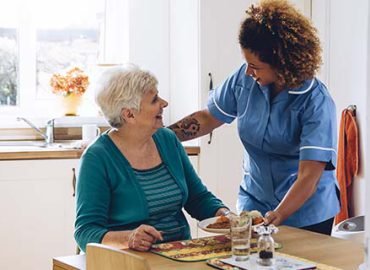How to age well and stay in your home
Based on an article by Jane E. Brody May21, 2018
We may hope to see grandchildren graduate from college, then perhaps marry and have families of their own. We may have projects to fulfill and a “bucket list” of places to visit. And we’d like to continue to live independently — albeit with hired home care help on occasion for overly challenging tasks — as long as possible.
Which raises the inevitable question: What will it take to age well in place, in the surroundings we’ve long cherished that bring us physical, social, and emotional comfort? What adaptations are needed to assure our safety and comfort and relieve our children’s legitimate concerns for our welfare?
For those of us who relish the familiarity of the status quo and perhaps cannot afford the R30,000 a month or more that assisted living would cost, our current homes may require some adjustments to postpone — and perhaps obviate — any need to move to safer if not more pleasurable dwellings.
It’s cheaper to stay in your home, even if you have to make some renovations and get Carers a few days a week to help. It’s money well spent and a lot cheaper than assisted living. But it’s important not to wait until there’s a crisis — a parent falls and breaks her hip.
We know that the most common response of aging parents to their children’s concerns is, “I’m fine” when they insist, “You’re not fine. Things usually can work out if the parties are willing to meet in the middle.
Spend a few days in the house with your parents, watch how they get around and identify changes that can make things safer and easier It’s a win-win situation to make the home safe.
Preparation and the changes to make:
Categorize items into five groups: (1) keep, (2) give away, (3) sell or garage sale potential, (4) charitable donations, and of course (5) the all-important throwaway pile. There is no “maybe” pile, no postponing a decision for any item. To avoid feeling overwhelmed by this task, tackle it piecemeal, a room, closet, shelf, drawer at a time.
Kitchens are a special challenge for seniors with physical issues. Have cabinets built with pullout drawers. Store most-used items on lower shelves, reaching even the bottom shelf of some cabinets can be a challenge. Use a grabber, or a stool – one with wide steps and treads and perhaps even a safety bar handrail. Avoid folding stools that have the potential to collapse. Cooking in a toaster oven or microwave can be a lot safer than using the stove for many seniors
The bathroom, however, is probably the most dangerous room in the home. Here, safety changes like installing grab bars and easy access in and out of the tub or shower are critical. Grab bars don’t have to look institutional; many brick-and-mortar and online stores sell attractive ones.

